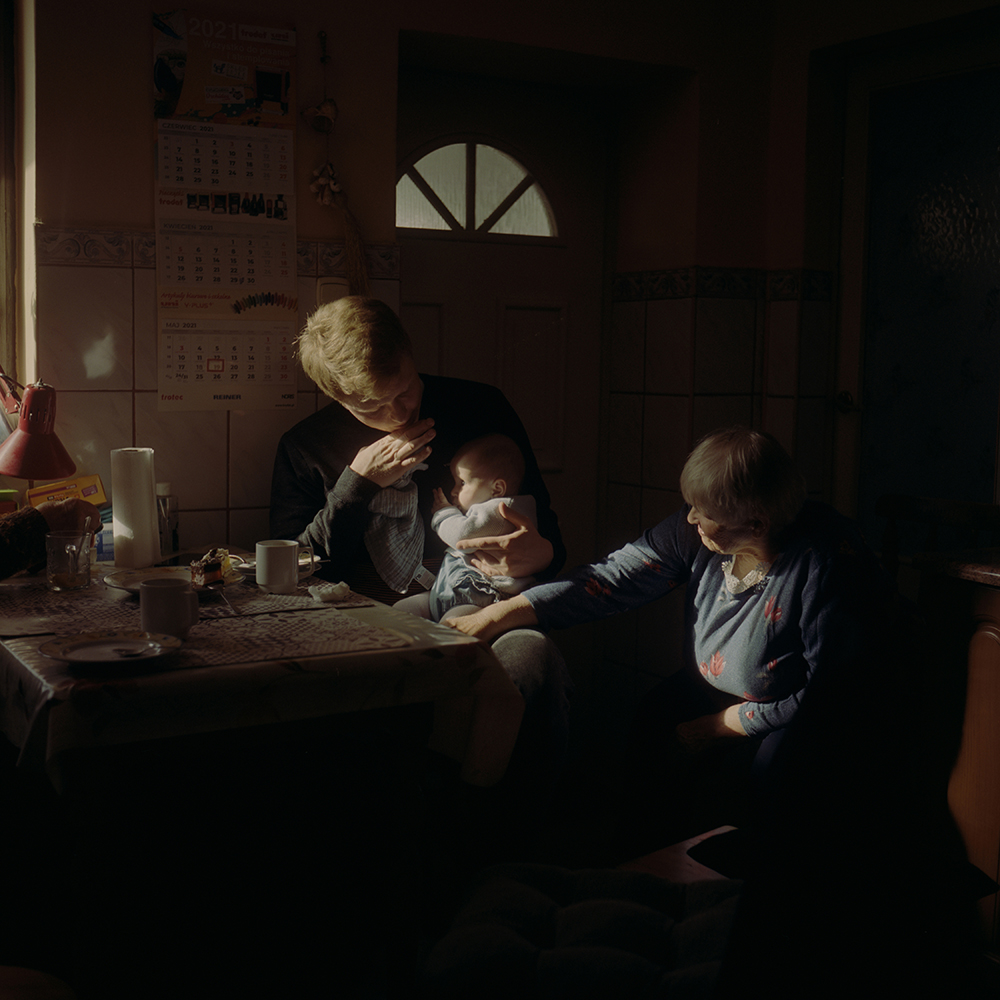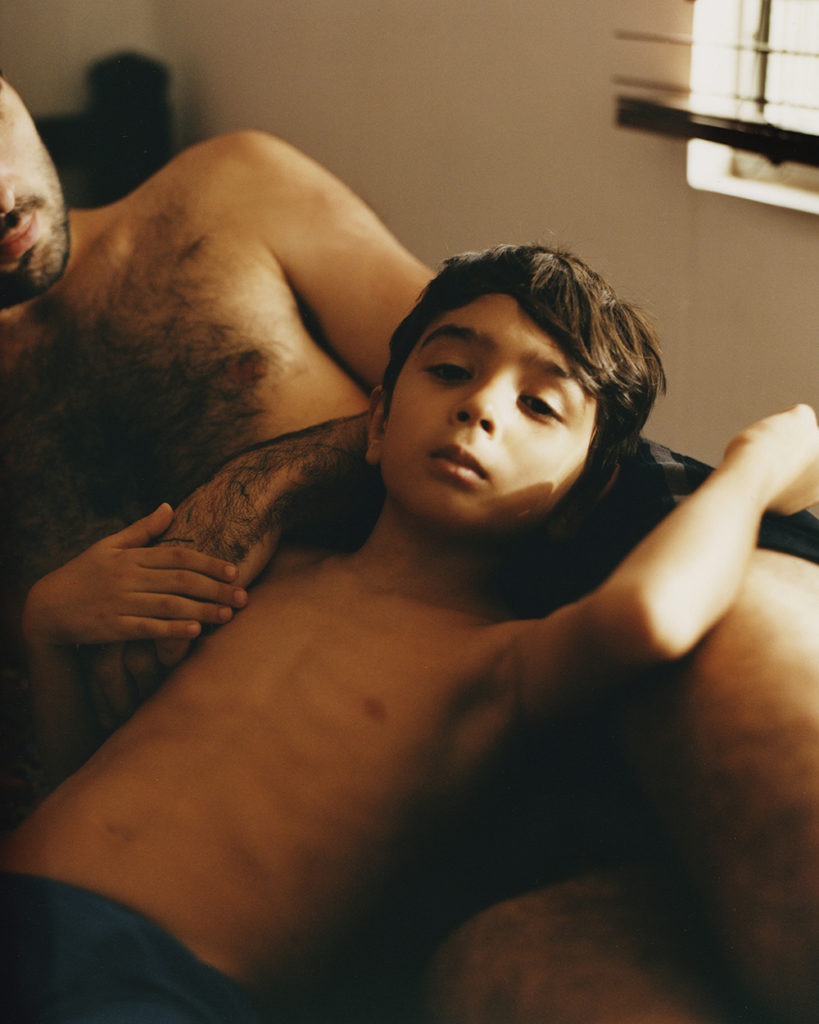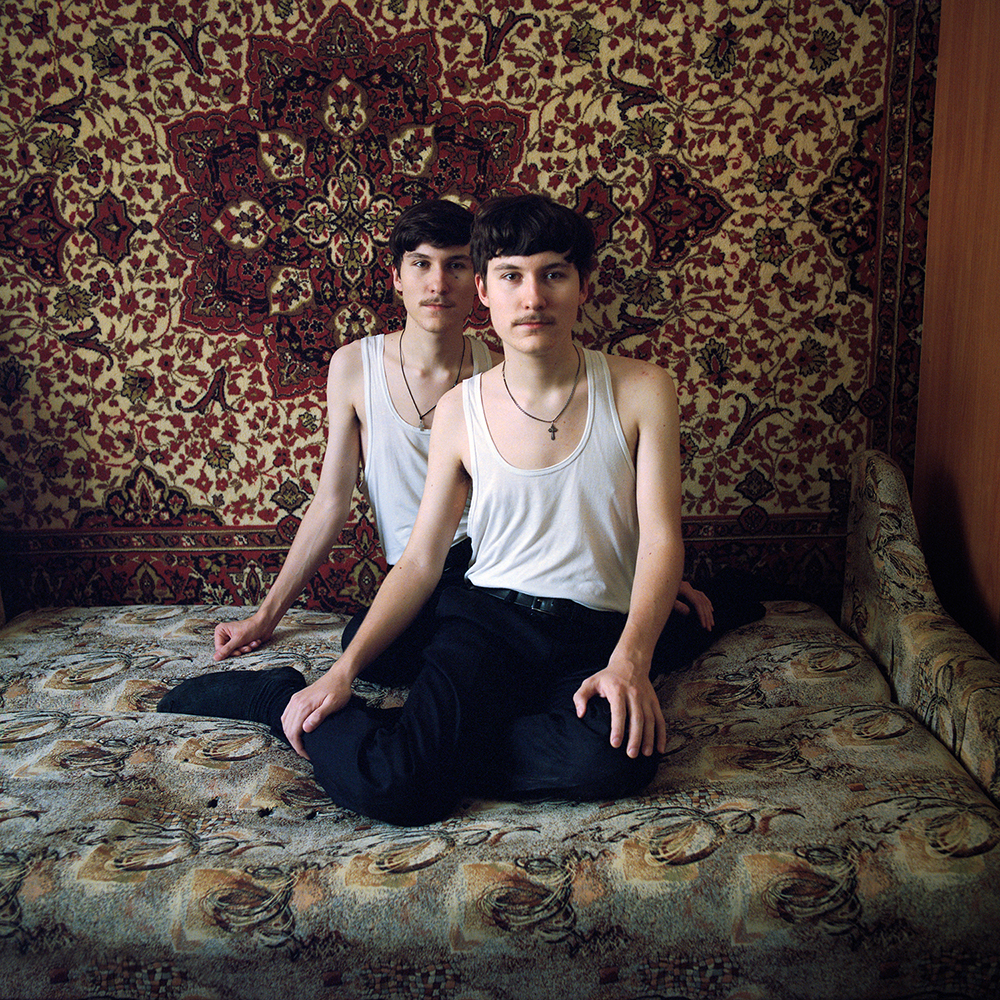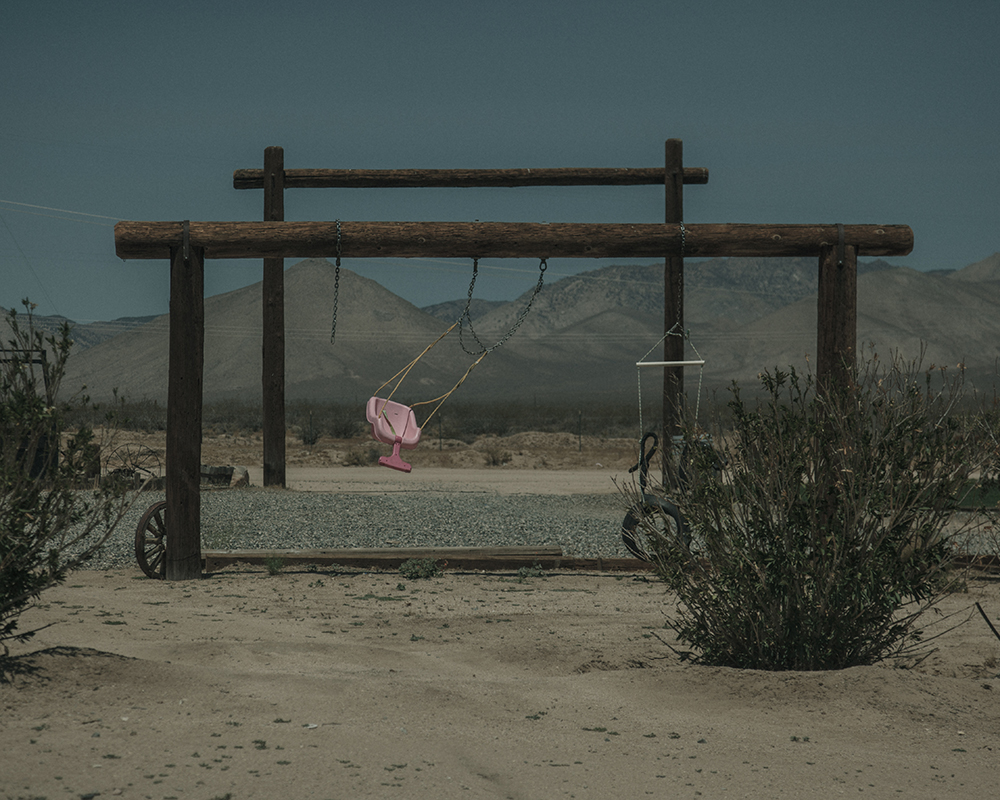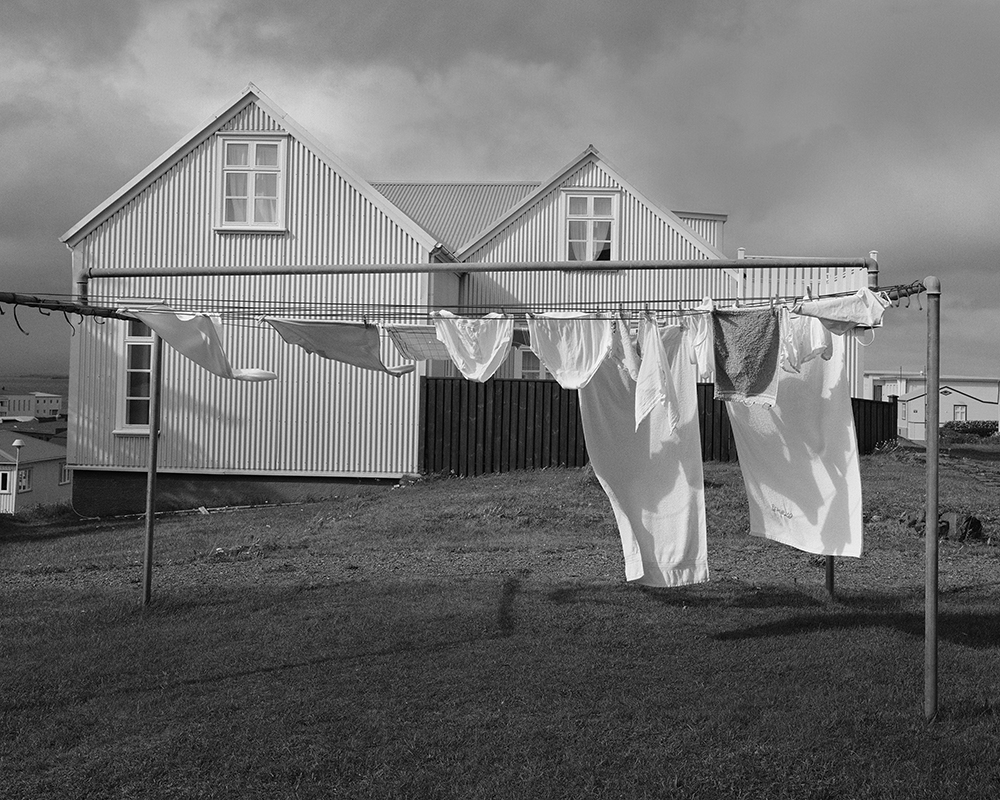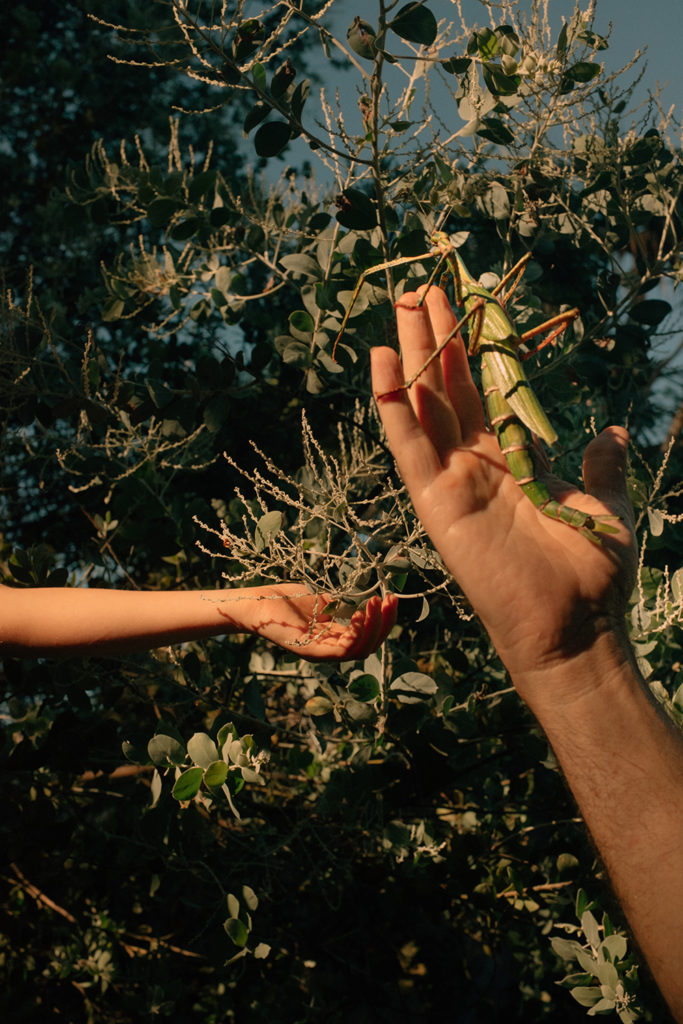What does it mean to be a body amongst other bodies, bodies that are like ours, bodies we came from, and bodies we are separate to? Who exists beyond this separation, before emptied swings and houses, where limbs caress the earth, and a child suckles milk from their mother? Artists Tori Ferenc, Bettina Pittaluga, Snezhana Von Büdingen-Dyba, Myrian Boulos, Laura Stevens, Erinn Springer and Lisa Sorgini explore these intricate themes with equal power as they do with vulnerability.
Tori Ferenc’s ‘The Visit’ shows an encounter between three generations, daughter, mother and grandmother. An age old, and sacred trope, that has existed for millennia and otherwise named: Maiden/ Mother/ Crone, the Three Graces, or different phases of the moon. Each cycle holds within itself great power, and strength– yet a dependence on the connecting link. Where the child depends on its mothers breast, the mother depends on her mother, who in turn depends on her granddaughter: who carries forward her life and legacy.
Bettina Pittaluga’s ‘Sergio and Imanol’ depicts a lounging father and son embrace. The shot is warmed by amber hues and the softness of light of the outward sun, presenting the stance with a sense of ease and father/ son intimacy. There is a sense here too, that the son–– though supported by the legs and strong arm of his father, who remains somewhat out of shot–– shows his own independence, with his direct stance. An endearing capturing of the connection between father, and son, and where two familial bodies joined in embrace, and part.
Snezhana Von Büdingen-Dyba’s ‘Igor and Oleg’, returns to theme of connection and separation. The two twins, in similar stances, are dressed the same and like a light trick– the viewer questions if they really are the same person, double exposured, or two separate people. When you glance further, their uniqueness becomes hard to un-see, as you begin notice a difference in their freckles, the sharpness of their collar bones and the subtle nuances in the over line of their chins, cheeks and brows. Von Büdingen Dyba calls into question the themes of separation and proximity, identity, merging and separation: and returns us to ourselves, and our own individual quirks and uniqueness– and what separates us from another?
Myriam Boulos ‘Night Shift’ depicts a sense of rebellion to its surroundings: a woman alone stands atop a car marked by indistinguishable blurs and mud stains, boarded off somewhere in the middle of the night. Where she is coming from, and to where she will go is left to the imagination of the viewer, somewhere between the jet black expanse of her surroundings.
Laura Stevens ‘Untitled #1′ depicts a more vulnerable side of motherhood–– a scene without mother, father, or child, but an empty swing in motion. A scene that depicts loss, separation and absence: the other side of motherhood or fatherhood is the impending reminder and possibility of that separation, either in the loss of a child, or in growth, when a child discovers their own autonomy and identities that could diverge from the people who raised them. Stevens work is powerfully evocative, the viewer can almost feel the clang of the swing chains whipping up against the silence of the wind.
Erinn Springer’s ‘A Clothesline in Iceland’ similarly invokes the surreal intensity that is movement in an otherwise still and un-inhabited shot. The wind blowing the linens in the wind reminds the viewer of the invisible motion that drives all things, but is otherwise forgotten and seldom captured.
Lisa Sorgini’s ‘Goliath’ shows us a moment of tenderness where a (wo)man intersects and interacts with an otherwise un-inhahited scene. Holding the tree by its hand, and cupping a praying mantis in the other: the subjects’ limbs join those of its surroundings as a divine coupling, and a sacred interaction. The colours of the shot bring fourth vivacity in its leaves and the tangy orange of the subjects skin, match those of the legs of the praying mantis.
These women and their tender, and evocative works capture the nuances that ultimately weave and bind us to who we are, where we came from, and who we are yet to become.


